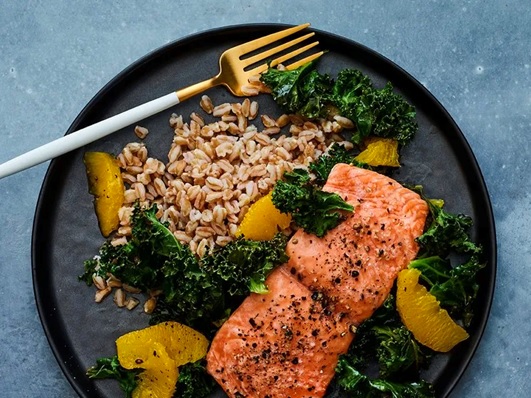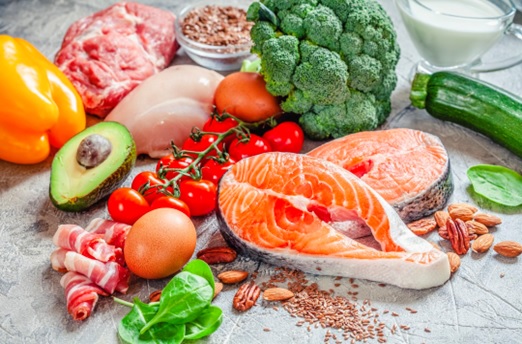
TEF stands for the thermic effect of food. This term is familiar for those in the fitness space but foreign to the general population. Understanding the thermic effect of food is beneficial for bodybuilders, the elderly and those wanting to lose weight or learn more about nutrition. If this is you then read below. You’ll learn all about TEF and why it matters for body composition and fat loss.
Thermic Effect Of Food
The thermic effect of food (TEF) refers to the number of calories your body burns digesting and absorbing food. It is also referred to as “specific dynamic action or “dietary induced thermogenesis”. TEF accounts for 10% of your total energy expenditure. This means if you eat 2000 calories in a day, 200 of those will be burned through digestion. Certain foods have a higher thermic effect because your body has to work harder to break them down. For example proteins are made from long chains of amino acids. It takes significant effort for your body to break down these chains therefore a few calories get used in the process. On the other hand, dietary fats are relatively easy to digest and your body can store them easily. If you want to increase your energy output and rev up that metabolism, you could do so by eating more high TEF foods.

What Foods Have A High Thermic Effect?
TEF is typically expressed as a percentage of the food. Protein has a TEF of 20-30%. Carbohydrates are 5-10% and fats are 0-3%. This means if you eat 100 calories of tuna, you will burn roughly 25 calories digesting it because it is a good source of protein. If you eat 100 calories worth of oil, only 1 or 2 calories will be burned since it is a dietary fat. Protein as well as high fibre foods have the highest thermic effect. This is why nutritionists tell weight loss clients to eat more eggs and fibrous vegetables. Drizzling your meals in oil and butter might make them tasty but your energy expenditure won’t increase very much at all. For future reference, the foods with the highest thermic effect include
- Turkey
- Chicken
- Tuna
- Legumes
- Cottage cheese
- Natural popcorn
- Yoghurt
- Lean beef
- Kale
Centering your diet around these types of foods will do wonders for weight loss and general health. They are full of nutrients and also keep you feeling full and satiated. Have a think about what you typically eat in a day. Can you sprinkle in more high TEF foods?
Do Larger Meals Have a Higher Thermic Effect?
It was once touted that you should eat lots of small meals throughout the day to rev up your metabolism. Well that is a myth. It turns out that larger meals have a higher thermic effect than little ones. This makes total sense. If your body wants to break down a gargantuan amount of food, it will have to get it’s A into G. This leads us to the conclusion that two or three large meals per day would be better for fat loss. Studies show that your body burns 2% more calories when you consume them at one meal as opposed to a bunch of smaller ones. Although the overall effect on energy output is minor, the marginal gains add up. Don’t believe the myth that six puny meals throughout the day is ideal for fat loss. The evidence tells us that two or three larger meals would be a much better idea.

Why Does TEF Matter?
Considering one third of New Zealanders are obese, this knowledge is relevant for the general population. Anyone looking to lose body fat must ensure their calorie output is higher than their input. Eating foods that are harder to break down will contribute to your daily energy expenditure, thus making fat loss easier. Bodybuilders are another subset of the population who would benefit from knowing what TEF means. To maximise lean muscle retention and lower body fat in the weeks leading up to the competition, eating foods with a high thermic effect is essential. Finally we know that metabolic rate decreases as you get older. For those of us getting on in life, eating high TEF foods is more important than ever. Obviously adding a little bit of chicken to one meal won’t make a difference to your metabolism. But slowly shifting towards a diet consisting of less frequent, high TEF meals will increase your energy output and stack the odds in your favour. So if you’re trying to drop some weight, are getting old or want to compete in bodybuilding, look out for the high TEF foods the next time you’re at the supermarket.

Conclusion
While the thermic effect of food may sound like boring technical jargon, knowing about it is useful. If we overeat protein, the amount that will be stored as fat is far less compared to if we overeat fats or simple carbs. Statistics tell us that the average New Zealander needs to lose a couple of extra kilos. If we increased our intake of protein and fibre rich foods, we might see a serious improvement in health and a decrease in obesity rates.
